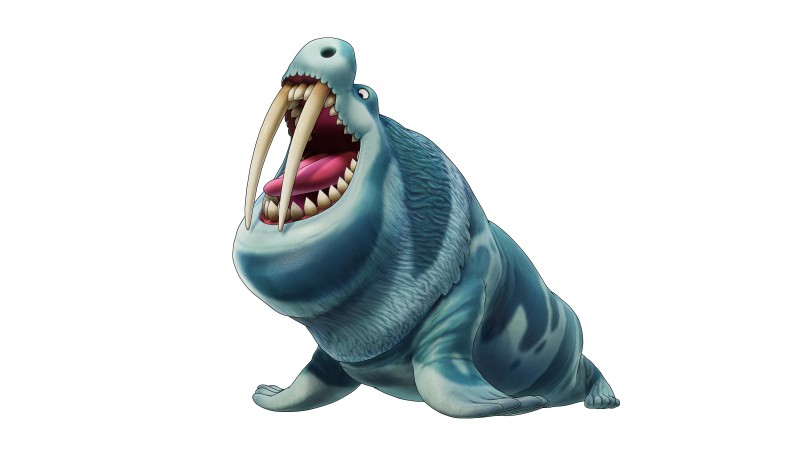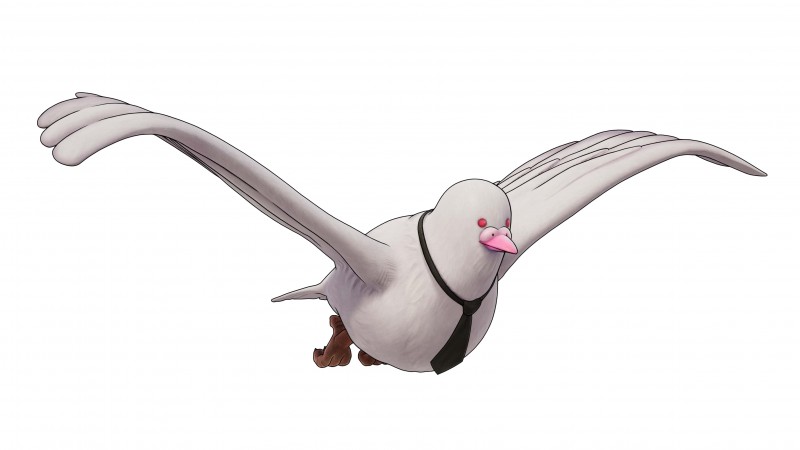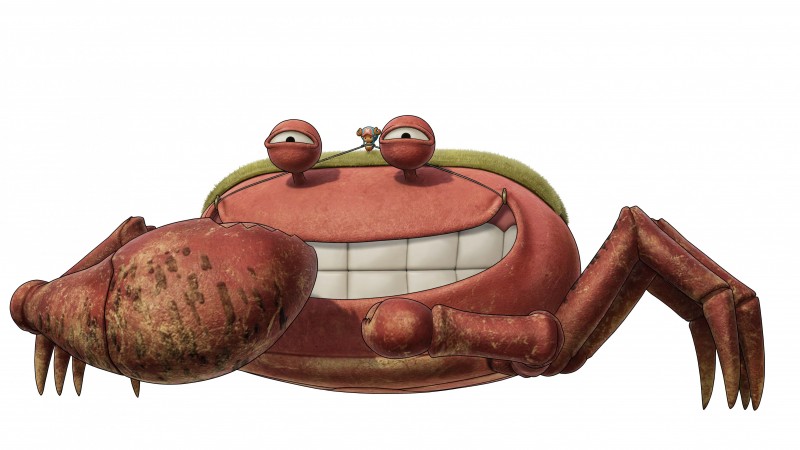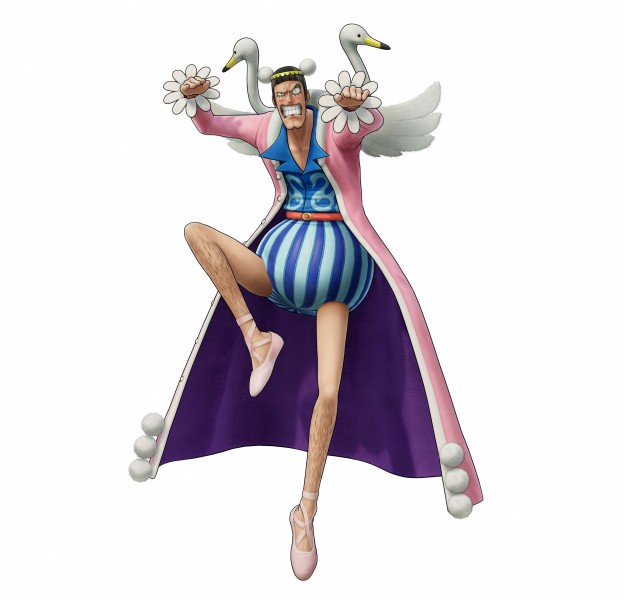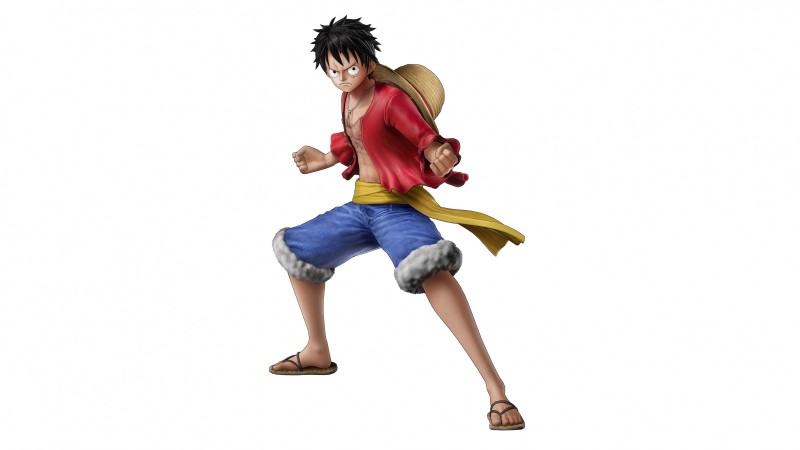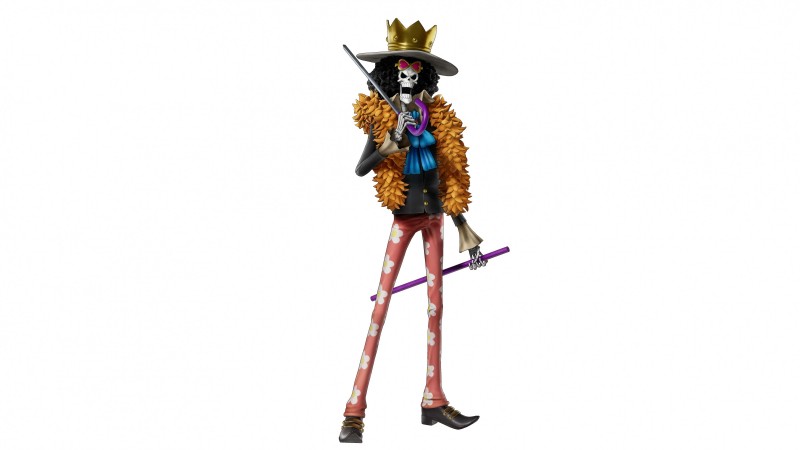


I finished the Arlong Park arc of the One Piece anime this year and took a break to watch some other shows on my lists and play through some games I’ve been meaning to finish. That’s to say, I went into a hands-on preview session with One Piece Odyssey with just a dash of One Piece knowledge, knowing there are still 1000-plus episodes for me to watch to catch up on the series. After roughly two hours of playing Odyssey, I am rearing to jump back into the anime, and that’s the best compliment I can give the game. It doesn’t hurt that Odyssey is shaping up to be a great JRPG with some unique systems that will make playing easier for newcomers to the genre and more dynamic for fans of these games.
I was worried about my lack of knowledge heading into this preview, but it’s clear in One Piece Odyssey that it was important for the team to design an RPG that appeals to all players, not just One Piece fans.
Logs within Odyssey fill in the spaces for players like me, too. When I reach Nanohana in Alabasta, these logs help me understand the location’s importance. They don’t provide the full story of Alabasta, though, which I think is great. I don’t even feel spoiled of that arc; Odyssey gives me just enough information to understand the importance of reaching this place in the game. Games based on popular anime sometimes fall into the trap of retelling stories from said anime, but not nearly as well. That’s not the case with Odyssey, though, and I think it’s a great foundation upon which this story builds in-game. That’s because instead of retreading classic tales fans already adore, Odyssey uses those arcs to tell new stories in familiar places.
For example, upon reaching the sandy desert city of Alabasta, the Straw Hat crew – captain Monkey D. Luffy, Brook, Franky, Roronoa Zoro, Vinsmoke Sanji, Nami, Nico Robin, Usopp, and Tony Tony Chopper – is aware of their adventures here. They talk about past experiences, Luffy remarks about his love for the Spice Bean Restaurant, and more. It reflects what One Piece has done in the past, and the new adventure builds on that.
Before reaching Alabasta, though, Odyssey sets up quite a disastrous situation for the Straw Hats crew and the Thousand Sunny ship it sails aboard. A cinematic reveals a mighty storm has knocked the Thousand Sunny off course, crashing it into the shores of a mysterious island. The shipwreck splits the Straw Hats up, and I control Luffy while attempting to find everyone. It’s here that Odyssey introduces its unique, flashy, fun, and surprisingly in-depth combat system to me.
At this point, the entire crew is level 40, meant to demonstrate their prowess as pirates. And each member has nearly a dozen skills at their disposal, too, like Luffy’s various Gum moves. At its core, Odyssey as a turn-based RPG, and people familiar with the genre will quickly pick up on how the game’s combat works. But looking deeper at its systems, I find mechanics inspired by Pokemon and dynamic scenes and menus inspired by the Persona series.
You encounter each enemy in a Scramble Area Battle, a system that spreads enemies out based on field placement. Luffy might be dealing with two enemies directly in front of him, and Sanji might not have an enemy in his zone, but his long-range moves allow him to attack those by Luffy. Nami can ignore the enemies closest to her to help Luffy as well, or she can focus on those in front of her. I pay attention to every enemy on the field not just because they can strike at me from any position but because each has weaknesses and strengths dictated by a Pokémon-esque, rock-paper-scissors-like system.
Power-type characters and enemies, and subsequent Power attacks, are strong against Speed, and Speed is strong against Technique, with Technique being most effective against Power. The game demonstrates effectiveness by using red arrows pointing up when aiming for an enemy with a specific move type or blue arrows pointing down to let you know that move isn’t effective. Some actions carry status effects, too, like paralysis, bleed, and faint, which renders foes temporarily unconscious. Skills, which utilize the moves fans of the manga and anime will likely recognize, use up Tension Points, but a super effective move can easily score you enough TP for another skill if you run out quicker than expected.
The combat is taken a step further with Dynamic Scenes, which are objectives that battles can introduce at the start of an encounter. In one story instance, enemies paralyze Usopp with a surprise attack, and the Dynamic Scene tasks me with defeating the enemies before they defeat the paralyzed Usopp, who can’t do anything to fight back or defend himself. The enemies focus almost exclusively on him, meaning I have to act fast to defeat his attackers. Completing a Dynamic Scene comes with extra experience and rewards, too, and it seems worth attempting to achieve with each instance.
All of this translates to a highly energetic combat system that hooked me just halfway through my first encounter. It’s fast-paced, easy to understand, and features minor tweaks like being able to swap party members on the fly without a cost that makes combat frantic and exciting in a way that I think will keep genre newcomers enticed. The UI and menus, especially in presentation, are seemingly inspired by Persona, too, making Odyssey’s combat a feast for the eyes. Each move carries inspired animation that looks great and dynamic, and the menus pop with color and style. Even the post-battle summary screen is reminiscent of Persona 5, with characters appearing on screen in a stylish way while a catchy tune plays to signify success.
On the note of music, it’s fantastic; perhaps even the stand-out feature of this entire preview for me. It’s adventurous, piratical, and precisely what you’d expect from One Piece. It’s no surprise, though, considering Dark Souls composer Motoi Sakuraba, who also has credits within the Tales and Super Smash Bros. series, is composing Odyssey’s score. Sakuraba’s score that I’ve heard thus far in Odyssey is a significant departure from what I know of him best – the Dark Souls series – but it wraps up everything going on in the game in the same sense of adventure the anime’s score does. I’m excited to hear other tracks within the game.

The game’s opening moments are about teaching you its combat system, but shortly after, you’re free to explore the starting areas of this mysterious island, which Robin determines is Waford, a location new to this universe. It’s shrouded in mystery, naturally, because the crew has never been there, and only Robin has heard of it, but it’s home to strange relics and artifacts covered in ancient-looking symbols.
I soon learn that these are attached to a new character created by One Piece creator Eiichiro Oda named Lim. This character is introduced just before the introduction of Adio, another new Oda creation. Lim determines the Straw Hats to be pirates and, before introductions, uses her strange power to take the crew’s skills and strength and turn them into cubes that she mysteriously scatters around the world. At this point, the cushy level 40 characters I used to crush enemies are now level 2, and their powerful skills are gone, too. All I can do now is use my standard attacks, and I chuckle, watching enemies previously take hundreds of damage points now take maybe a few dozen.
It’s a fun spin on the typical “how do we make this strong party no longer strong” formula seen in RPGs, and I like that it’s woven directly into the story. It also makes collecting these cubes, which is at the story’s core, fun because with each successful mission might come the prospect of a new cube and, subsequently, some of my previous skills and strength. I have to explore the World of Memories to find more of these cubes. While I don’t get to see how this world works, it seems to be a portal of sorts that transports me to famed places from One Piece history, like the aforementioned Alabasta.
Lim takes the Straw Hats’ powers because she fears they’re criminal pirates, the kind she has problems with, but she soon discovers that they’re “good” pirates and regrets what she’s done, informing them of what they need to do to return to their former selves. Enter the World of Memories.
In Alabasta, I do some standard questing – defeat an enemy holding a mission item, return it to this person, collect some ingredients so crew cook Sanji can whip up a tasty soup for a local, and more. The individual objectives aren’t the most exciting, but looking at the beautifully-rendered world of Odyssey makes it easy. Being able to control various crew members at different times keeps things exciting, too. Some players likely won’t agree with the 3D aspect of the game, but it works for me, as does the odd but quaint painterly visual style. It runs well, too.
Side content in Odyssey isn’t doing anything groundbreaking, although I admittedly only dabbled in it during my hands-on time. But I don’t necessarily need it to be groundbreaking, and the same goes for even the golden path. Odyssey is the first One Piece turn-based RPG of this caliber, breaking the mold of typical anime games that either go the route of 2D or 3D fighting, or action, and that alone is refreshing.
Even with my relatively little One Piece knowledge, it’s easy to see how much care developer ILCA has put into taking this franchise into RPG territory. Whether it ends up being a hit in the fandom remains to be seen, and the same goes for how authentic to One Piece as a franchise Odyssey is. But if my two hours of hands-on time demonstrate anything, it’s that Odyssey is shaping up to be a unique and exciting JRPG, and one players should keep an eye on, One Piece fans or not.








